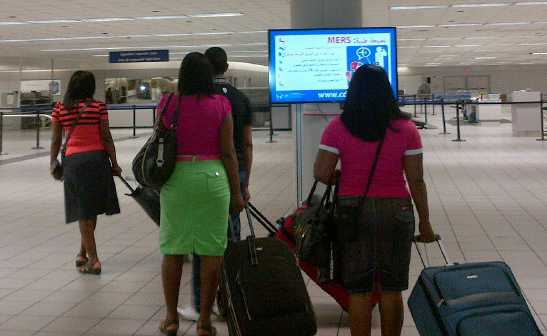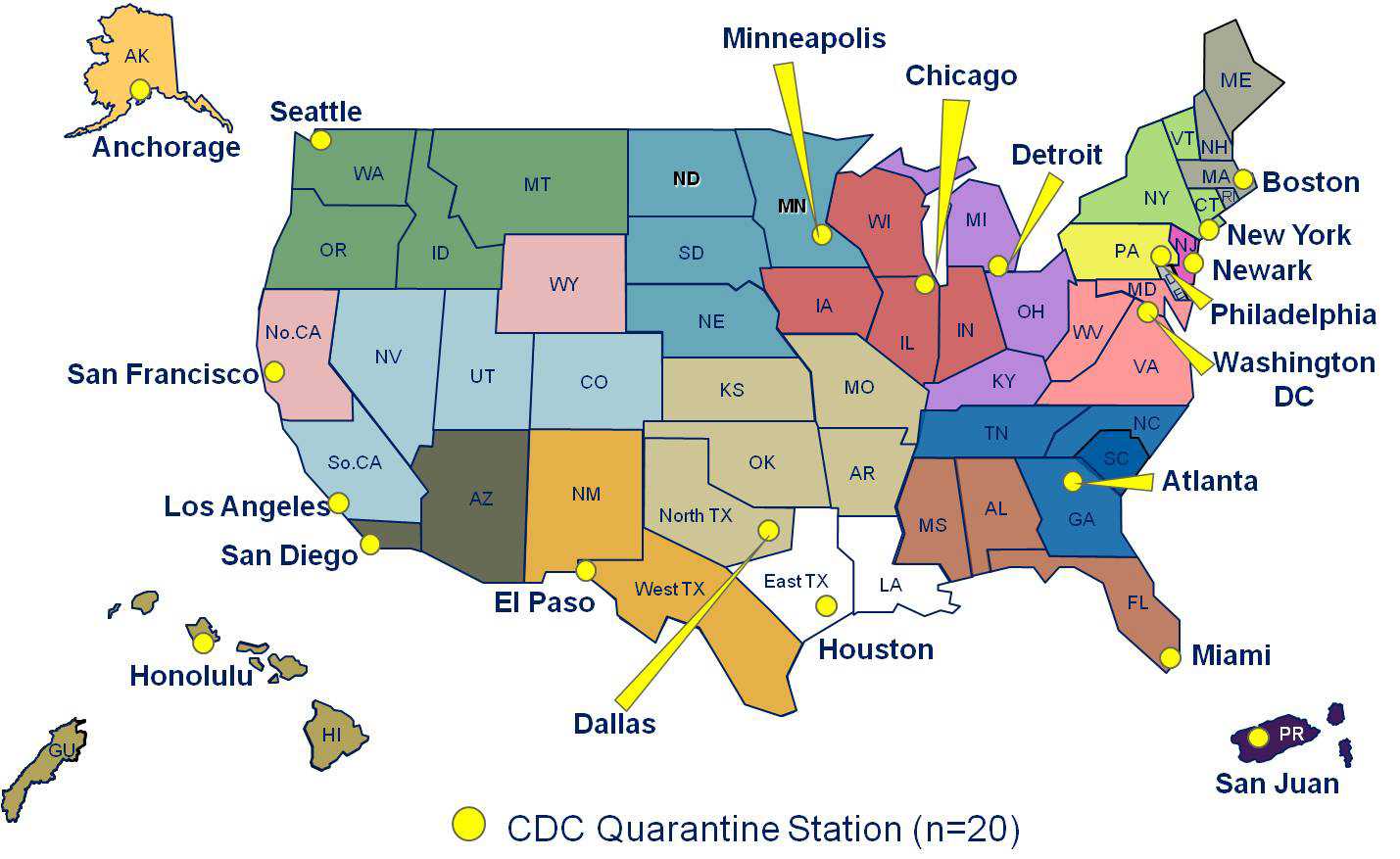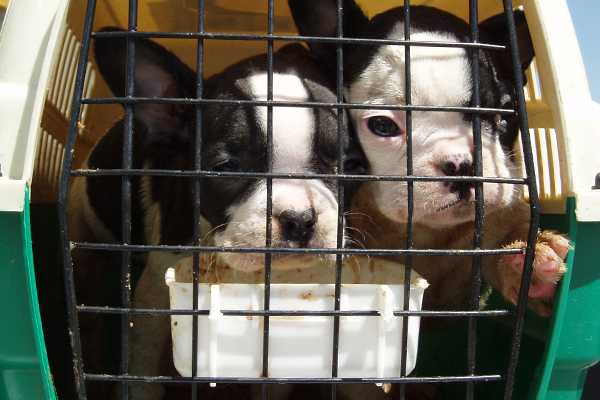Protecting America’s Health at U.S. Ports of Entry
Detect, respond, and protect 24/7

Strategically placed at 20 U.S. ports of entry, CDC protects America from public health threats, both foreign and domestic. Highly skilled CDC staff work 24/7 to detect, respond to, and prevent the spread of contagious diseases.
With our partners, CDC responds to sick travelers who arrive in the United States at major airports, seaports, or land border crossings. We alert travelers about disease outbreaks and steps they can take to protect themselves. We restrict the importation of animals and products that may carry disease.
We are always on call—during the workday, on weekends, and in the middle of the night. We’re on the frontlines, protecting you and your community.
Disease is just a flight away

When sick passengers are on a flight, the airline lets CDC know. We evaluate whether they might be contagious to others on the plane.
Some diseases can spread quickly through a community, so CDC works with state and local health departments to evaluate and respond. When necessary, CDC can prevent a sick person from traveling and exposing others to disease.
It’s all about making sure 1 sick traveler doesn’t become 100 sick people in your community.
Responding with life-saving drugs
Because we are located at airports, we can send life-saving drugs on the next flight. CDC can rapidly provide essential drugs for emergency use and save the life of someone with malaria, botulism, or diphtheria.
Restricting animals and products
Millions of animals and animal products enter the United States every year. Some animals and products can carry diseases that make people sick. We watch for these animals, such as monkeys, bats, African rodents, small turtles, cats, and dogs.
We also help ensure these animals are healthy when they arrive. For example, we make sure dogs are healthy and vaccinated against rabies.
We prevent the importation of products that can cause diseases in people. For example, anthrax can be found on goat-skin drums.
Who we are
We are scientists, doctors, nurses, veterinarians, technology and data experts, educators, communicators, and emergency responders. We are a diverse workforce from many cultures, speaking many languages, with a passion and expertise for safeguarding America’s health.
We are CDC’s Quarantine and Border Health Services Branch, part of the Division of Global Migration and Quarantine, working 24/7 at U.S. ports of entry to protect you and your community.
Where we are
We are located at 20 U.S. ports of entry (see map) where most international travelers arrive. But our work covers all the ports of entry (more than 300) into the United States.

How we work with our partners

We work every day with Customs and Border Protection and other federal agencies, the airlines and cruise lines, and state and local public health departments. We evaluate sick travelers and prevent the spread of disease to U.S. communities.
Together, we respond to public health threats. We also work together to plan, train, and evaluate our ability to respond.
For more information or stories
- Page last reviewed: December 23, 2016
- Page last updated: December 23, 2016
- Content source:


 ShareCompartir
ShareCompartir
